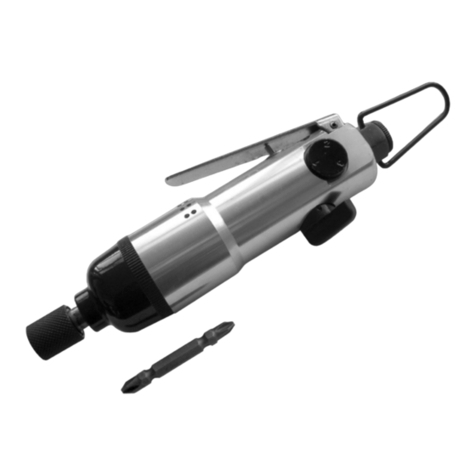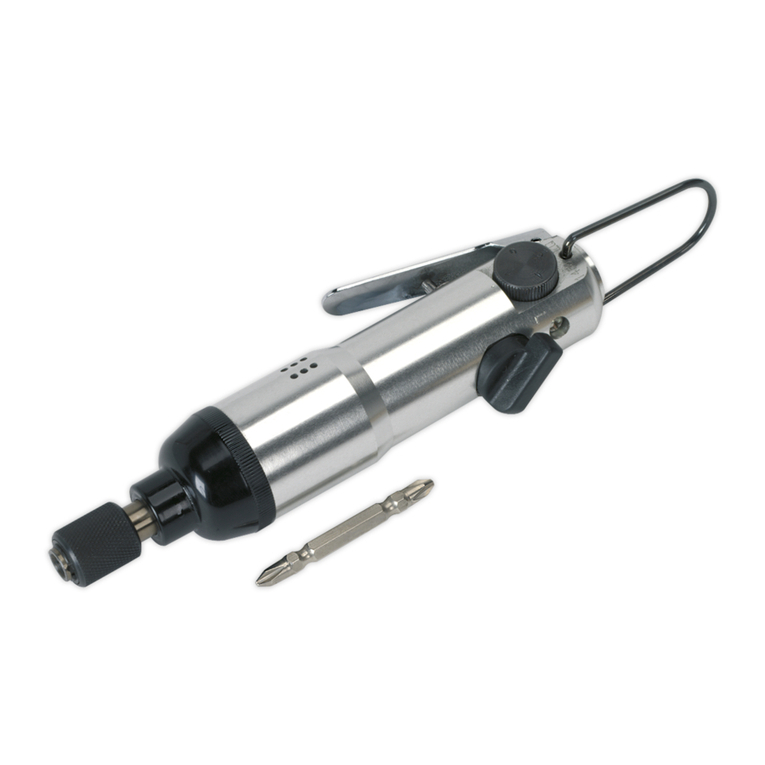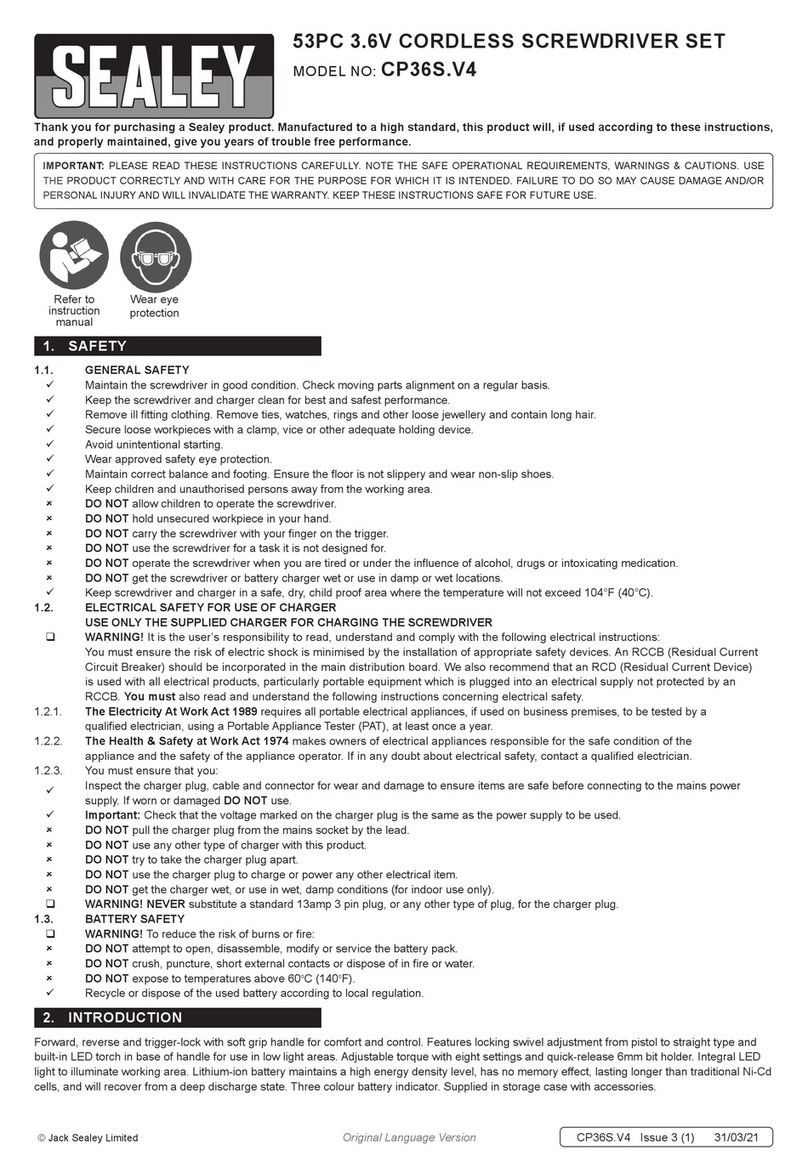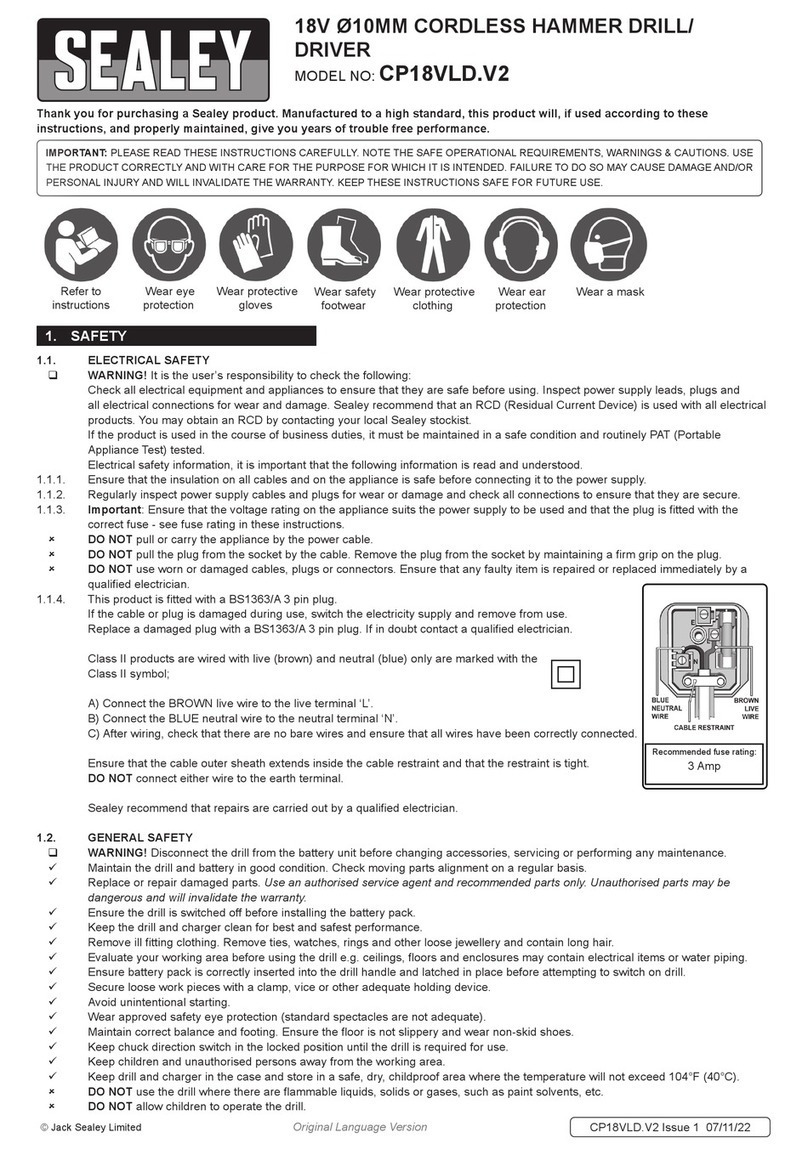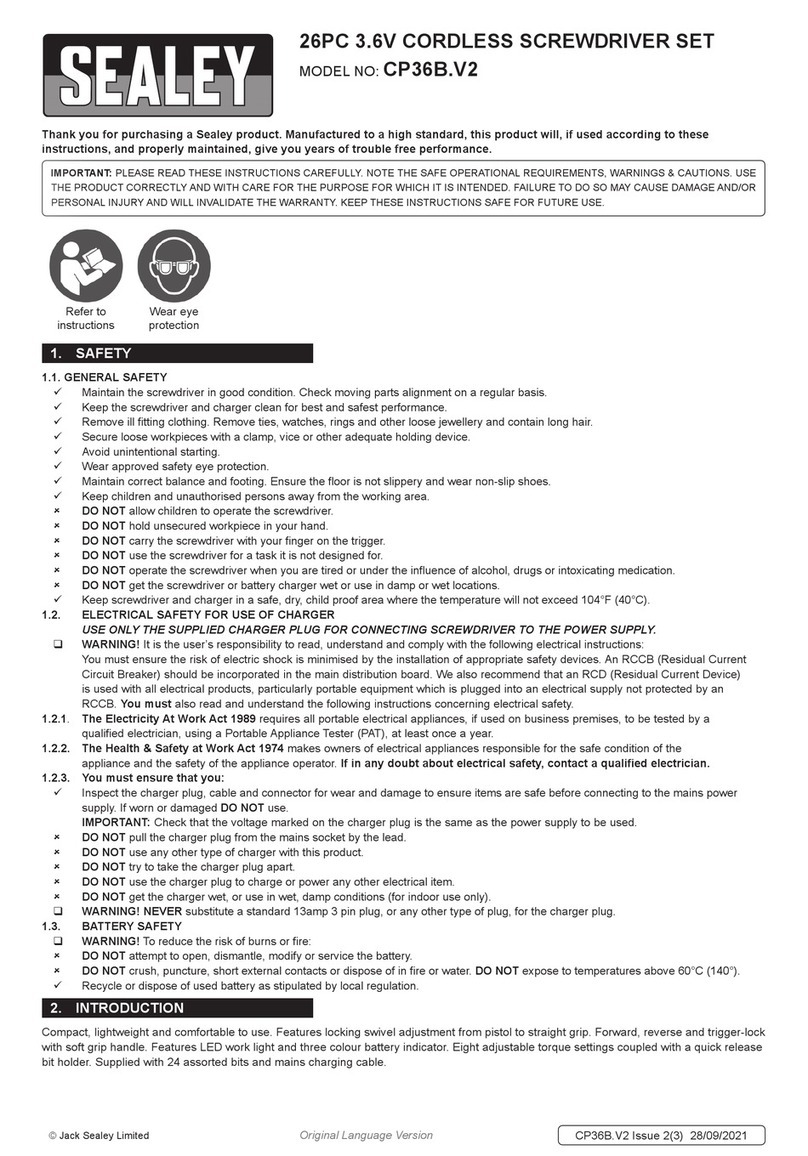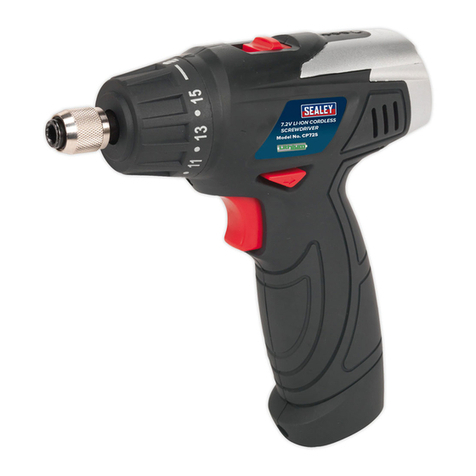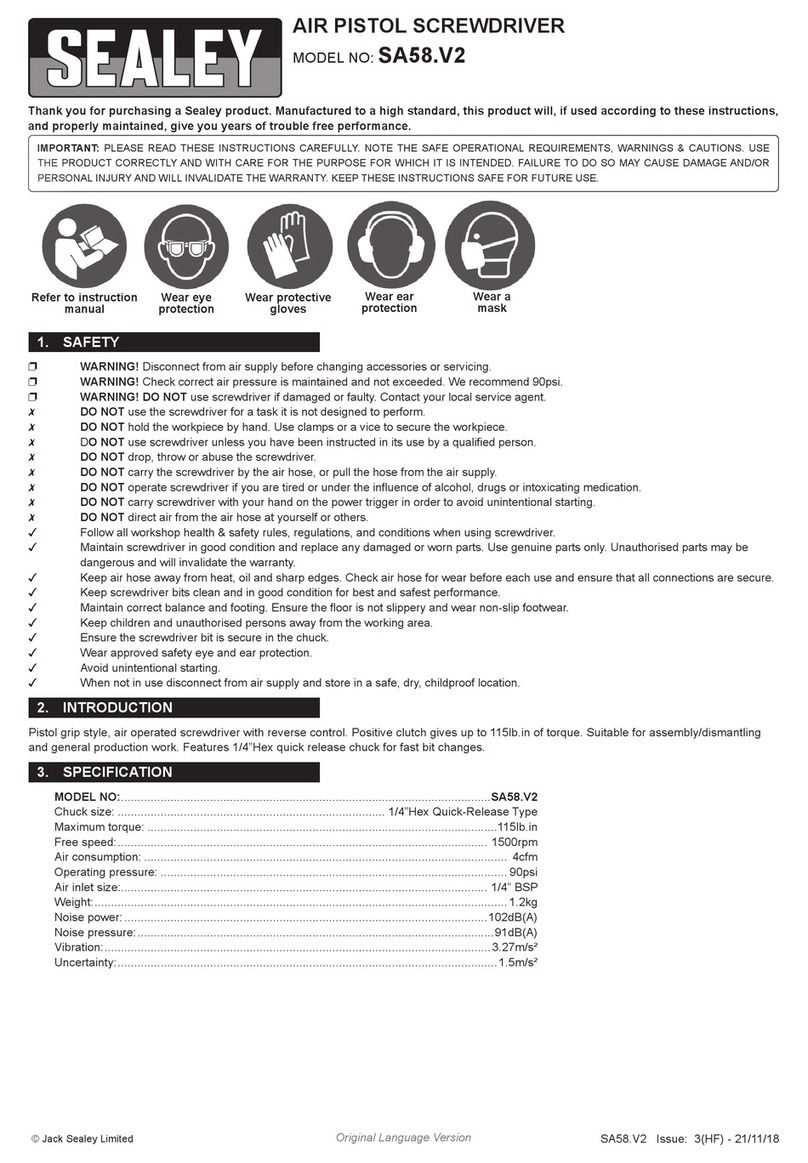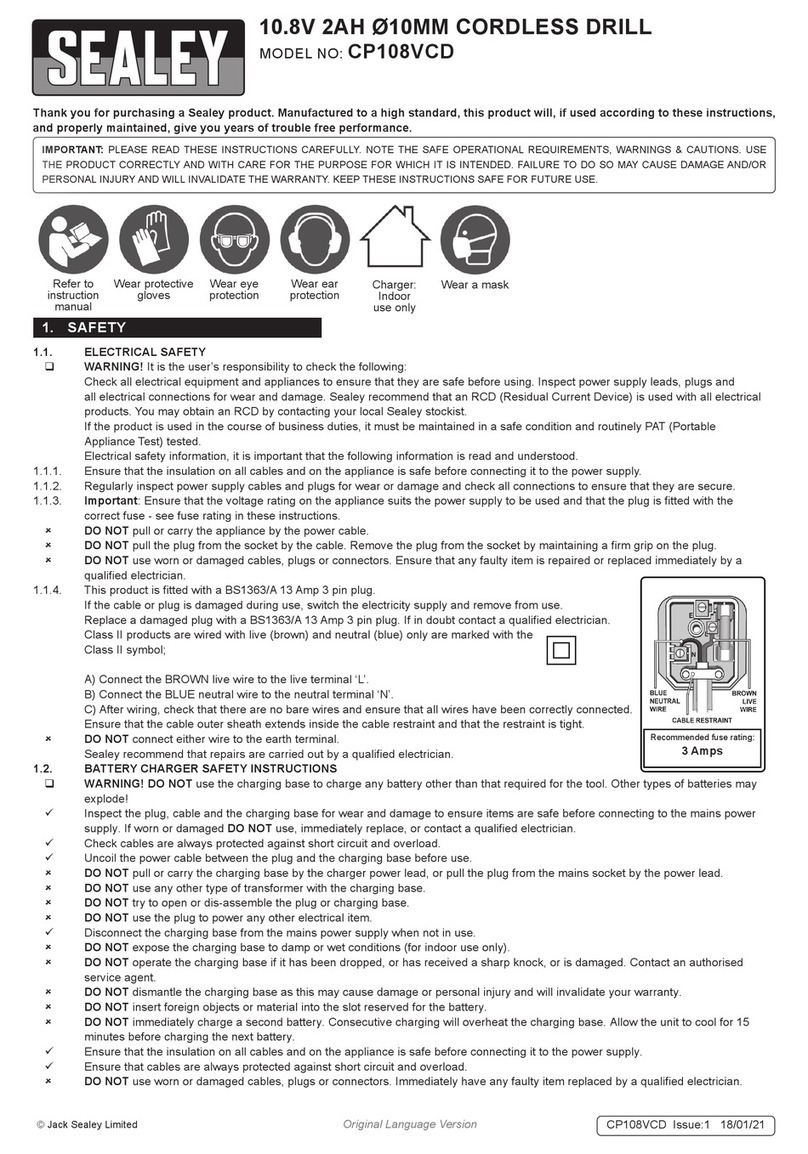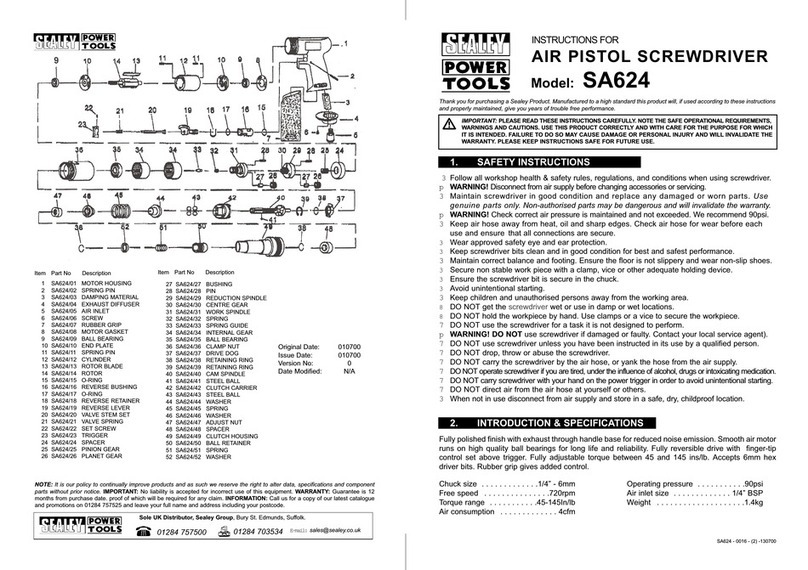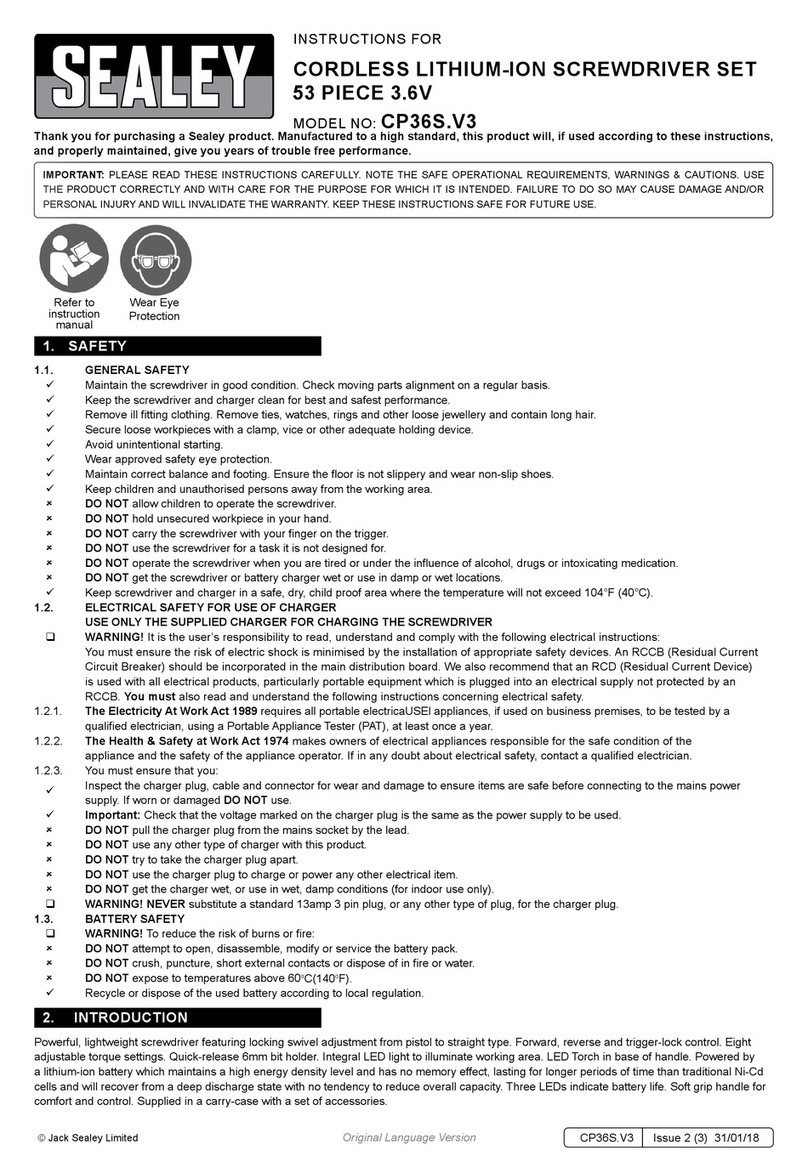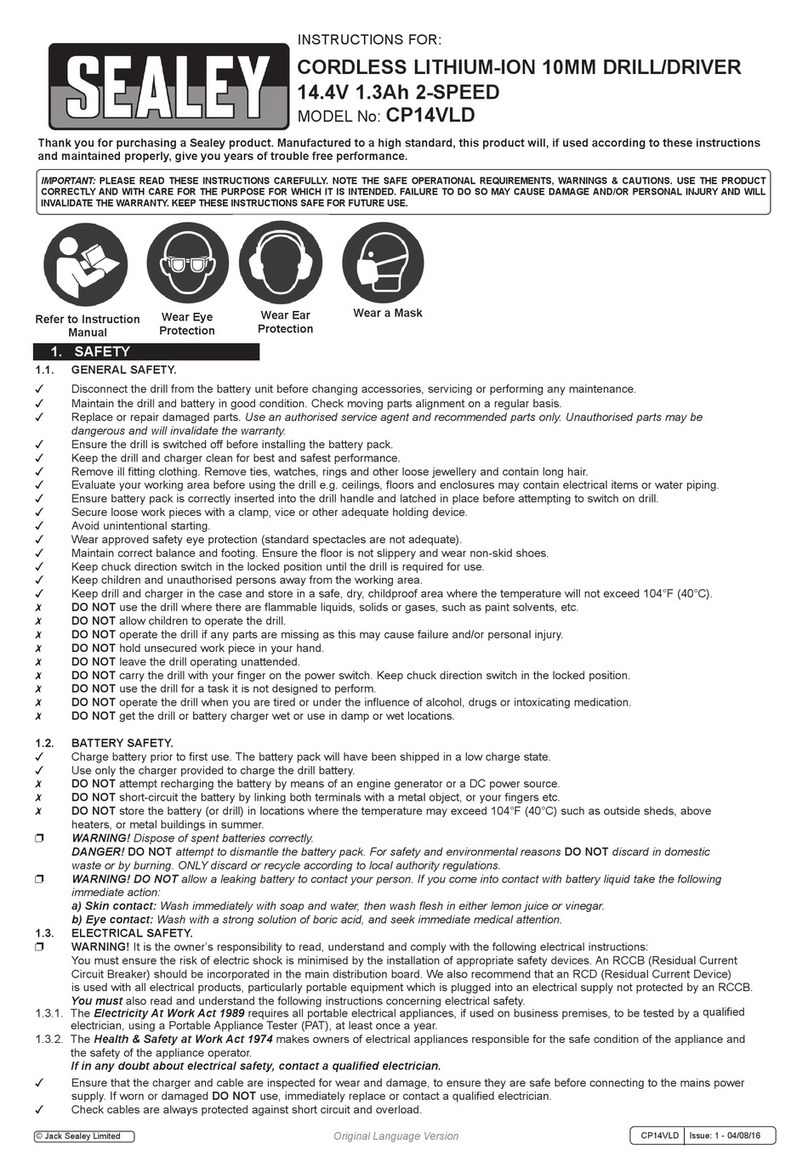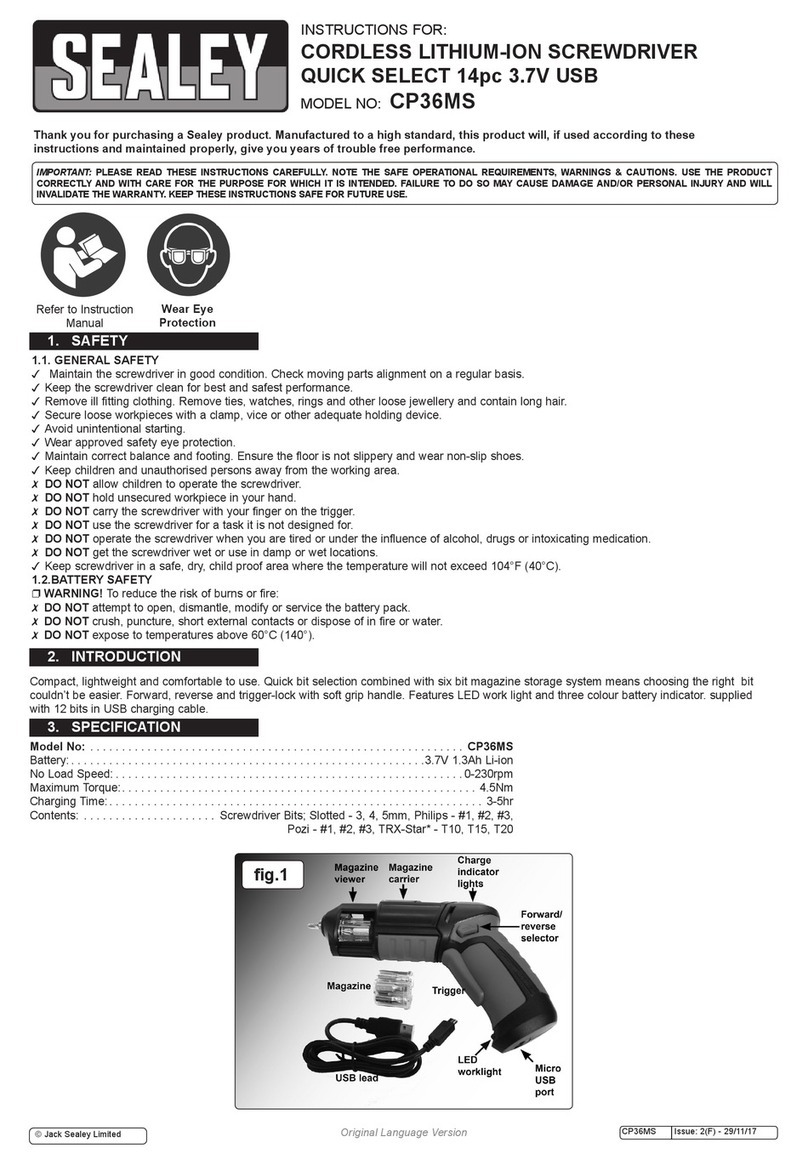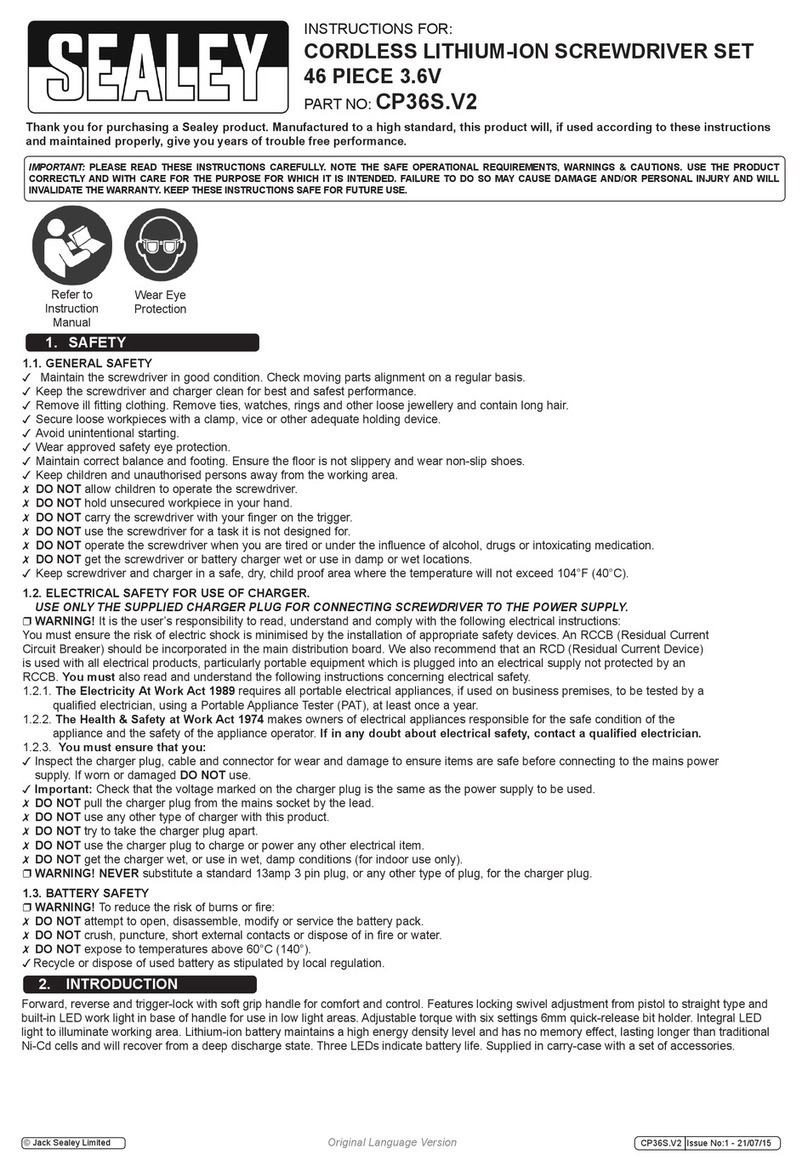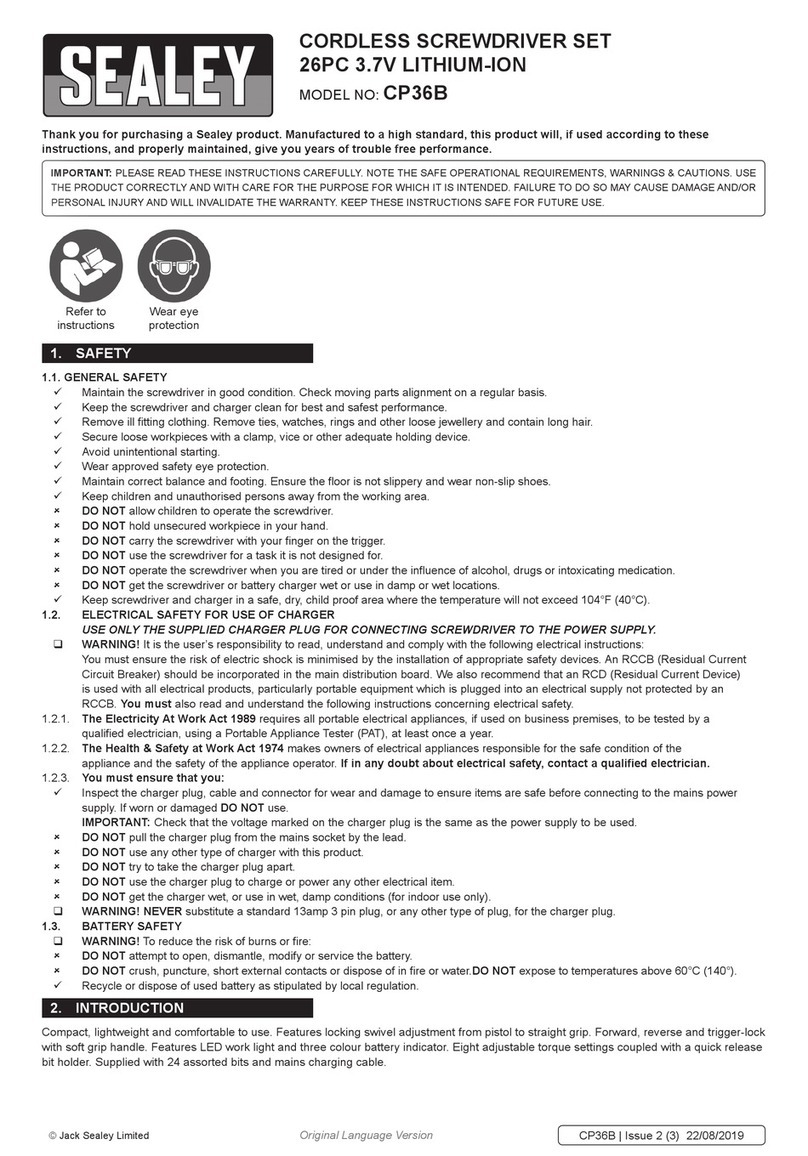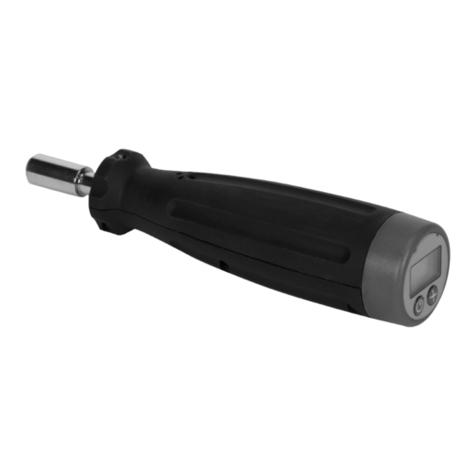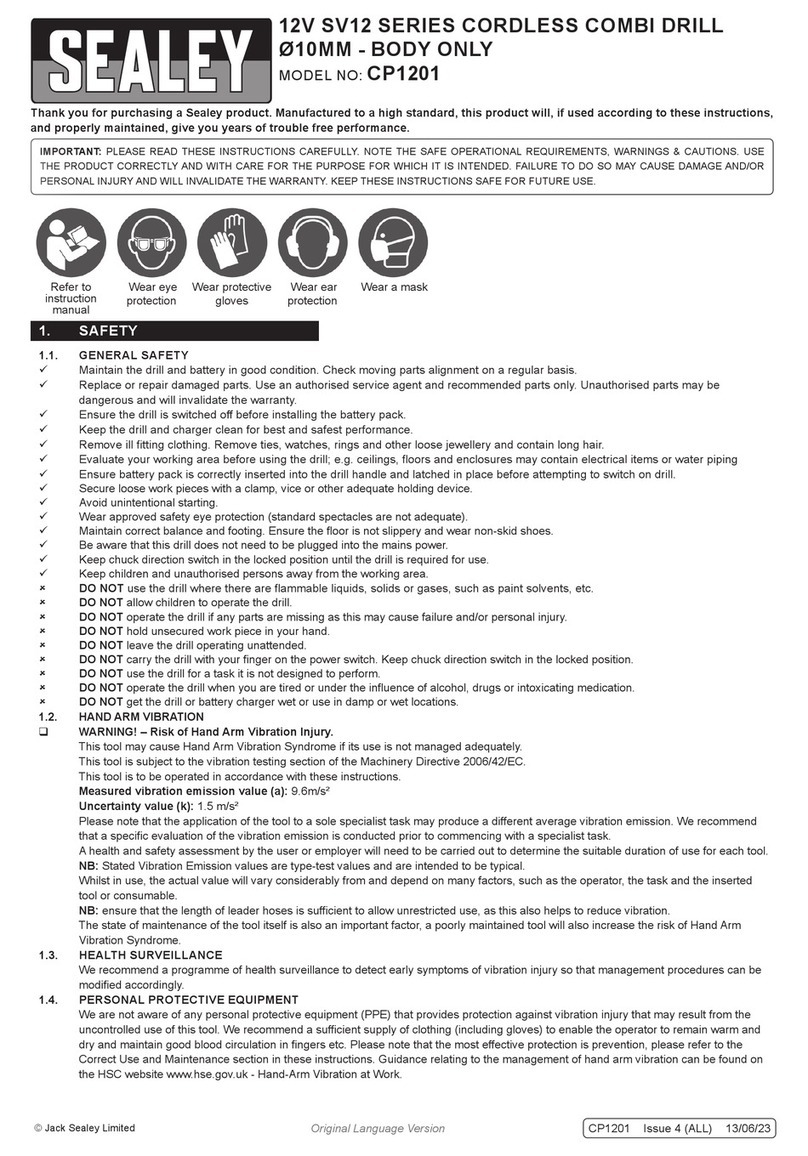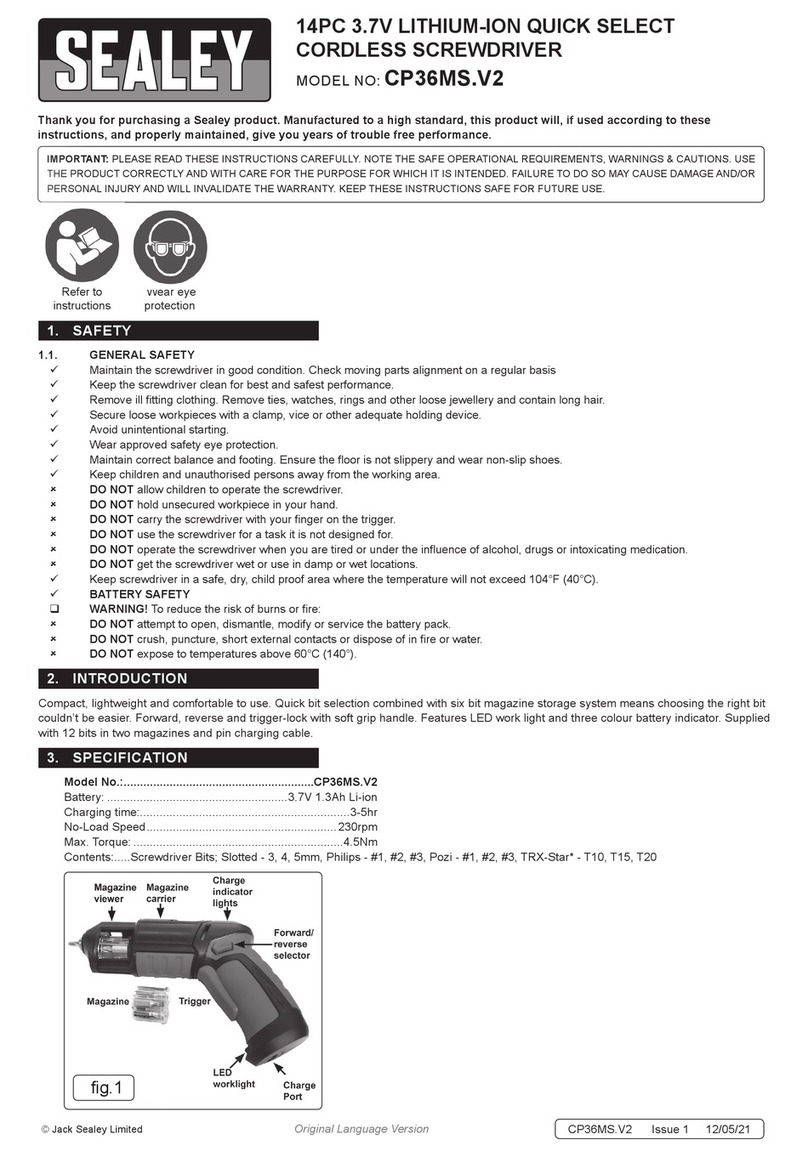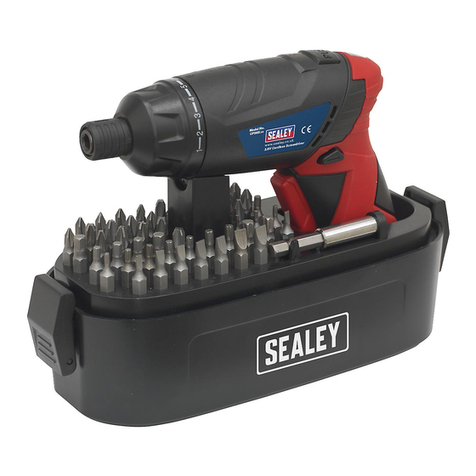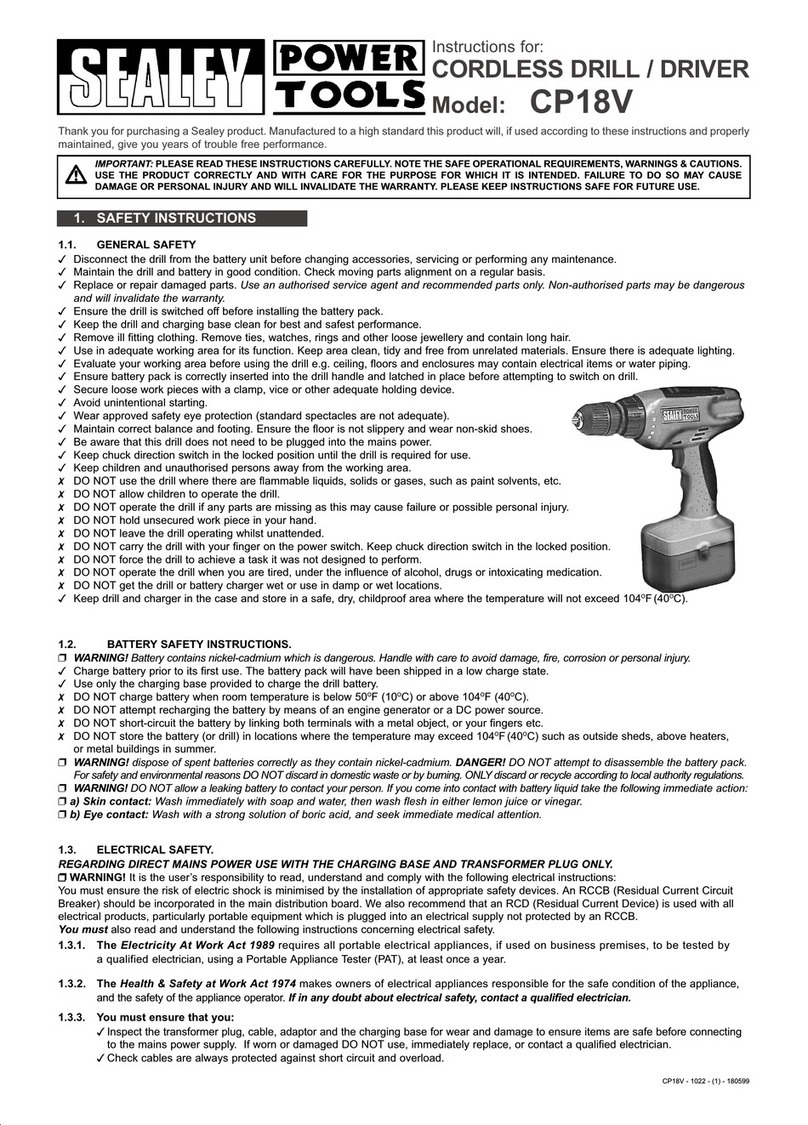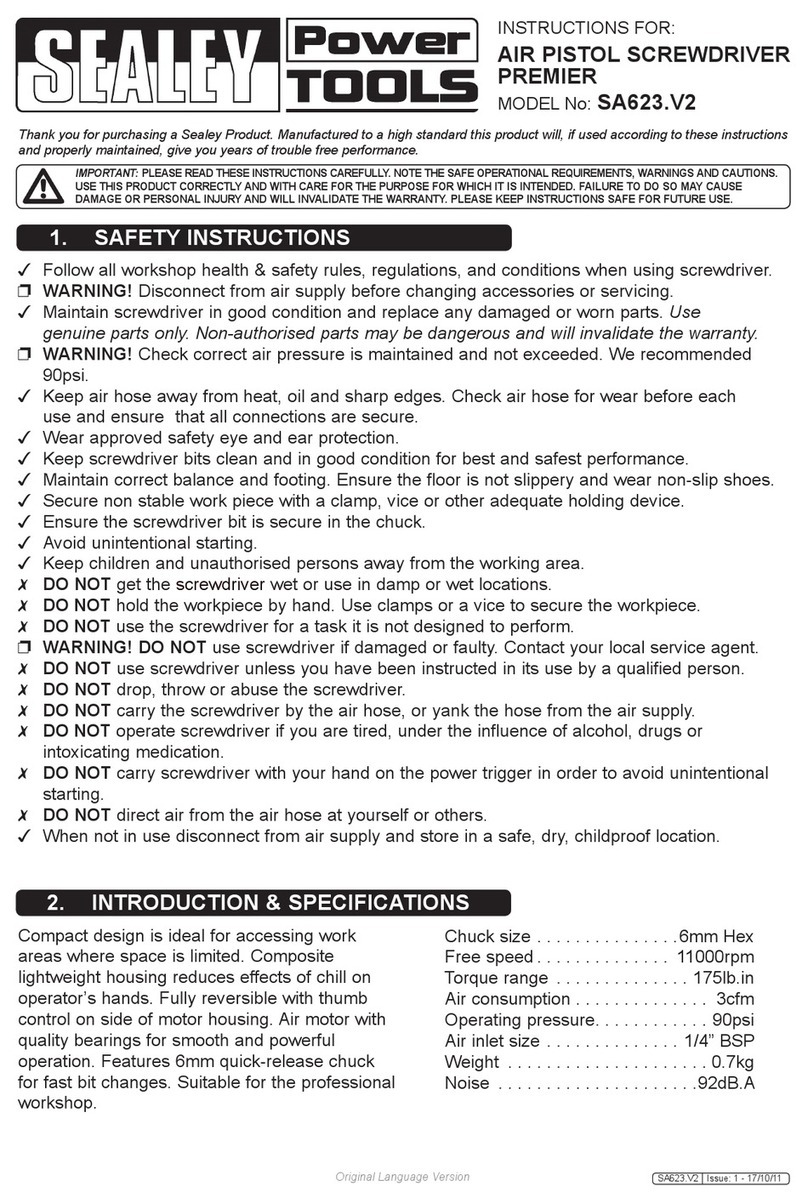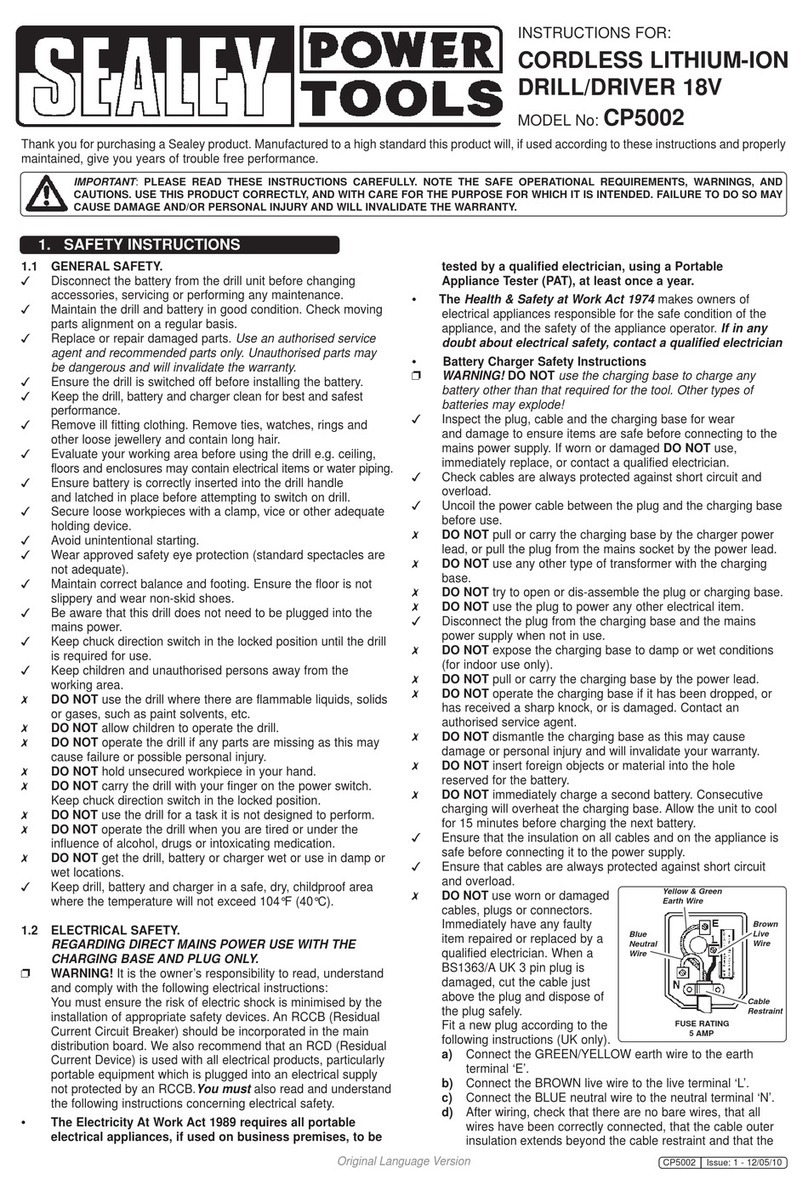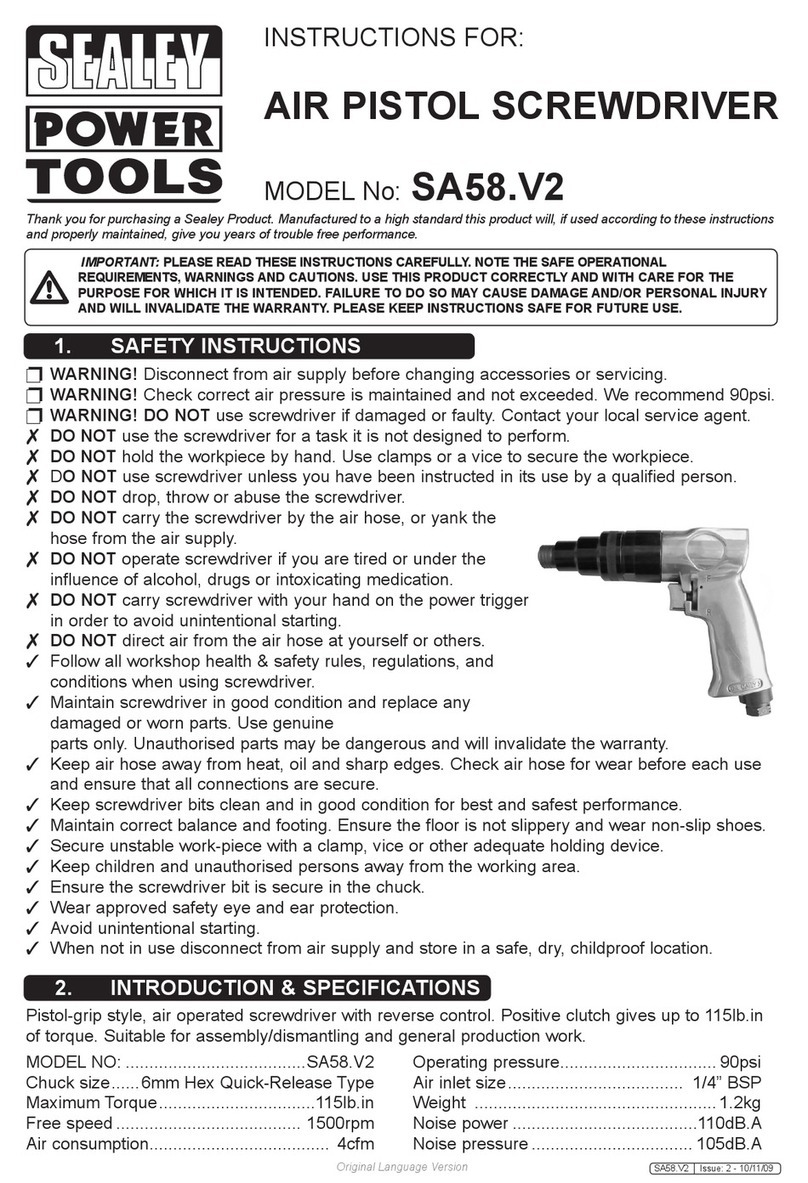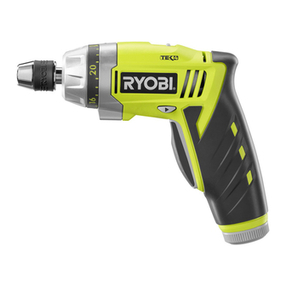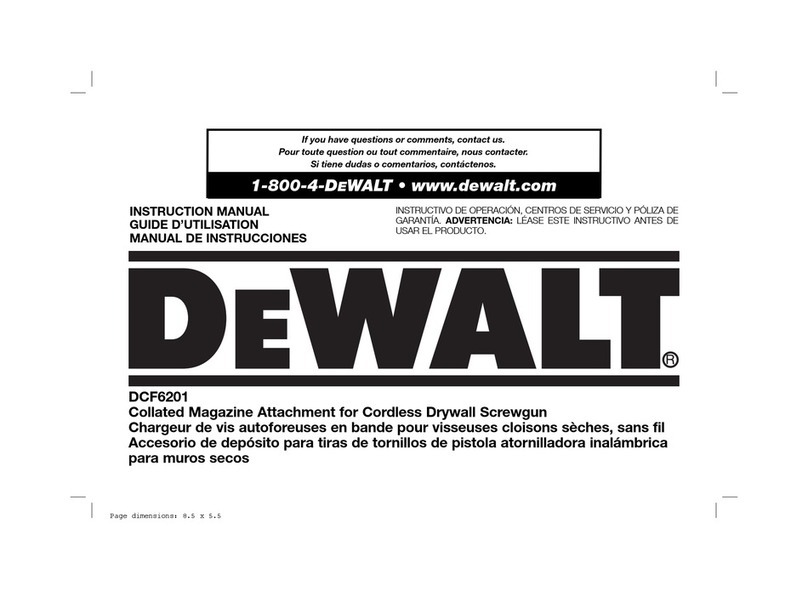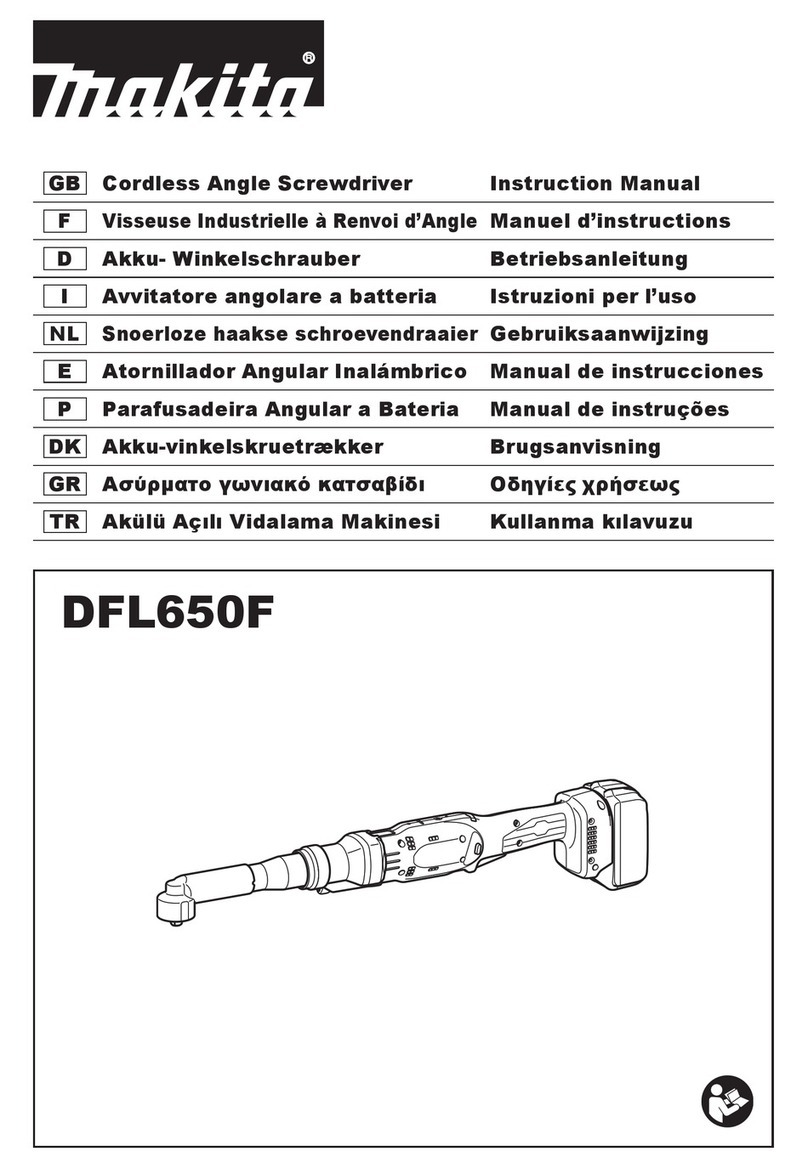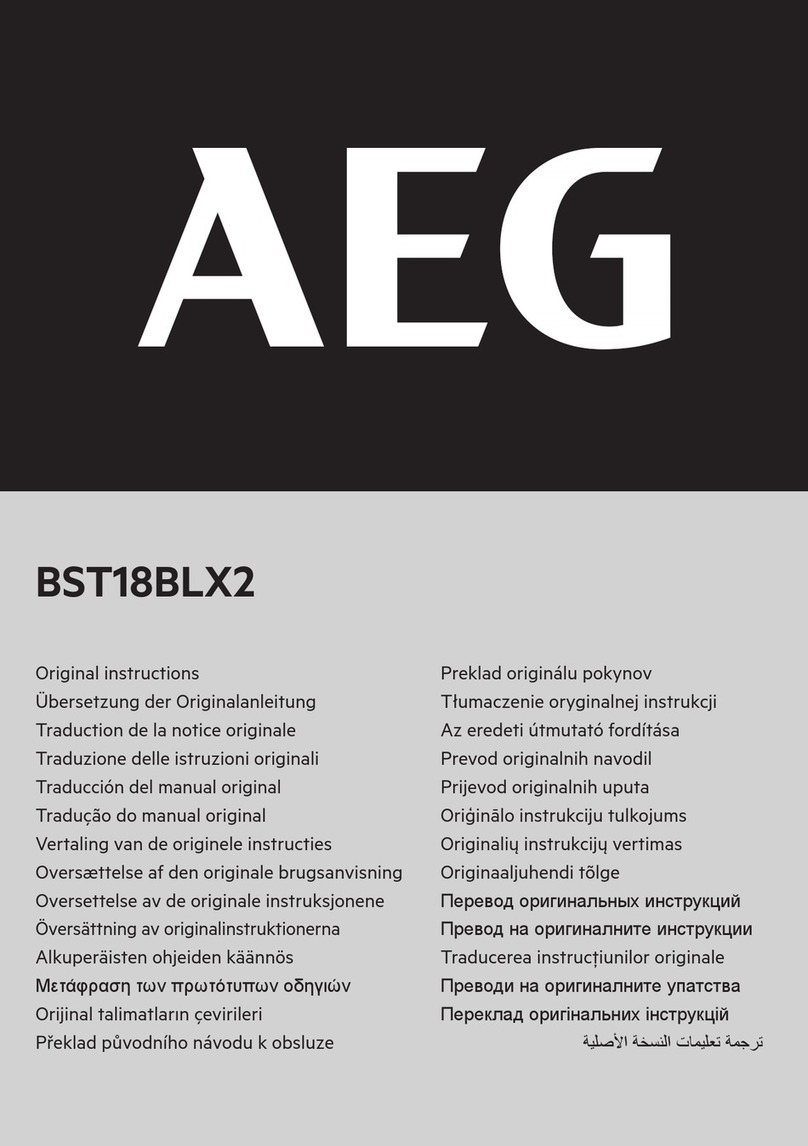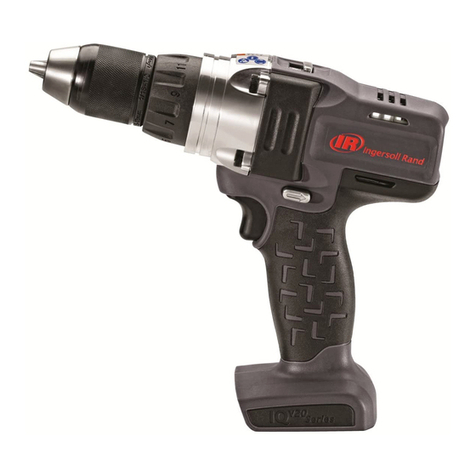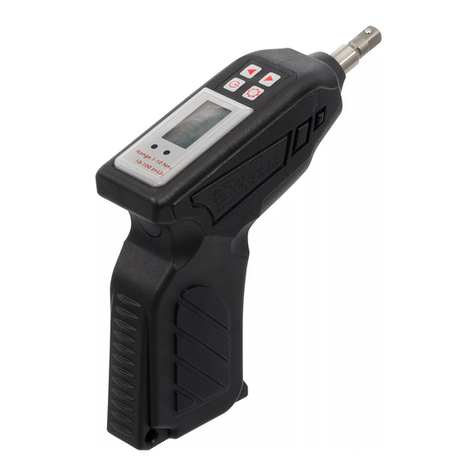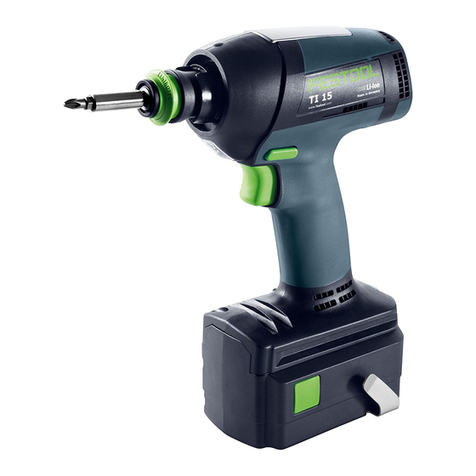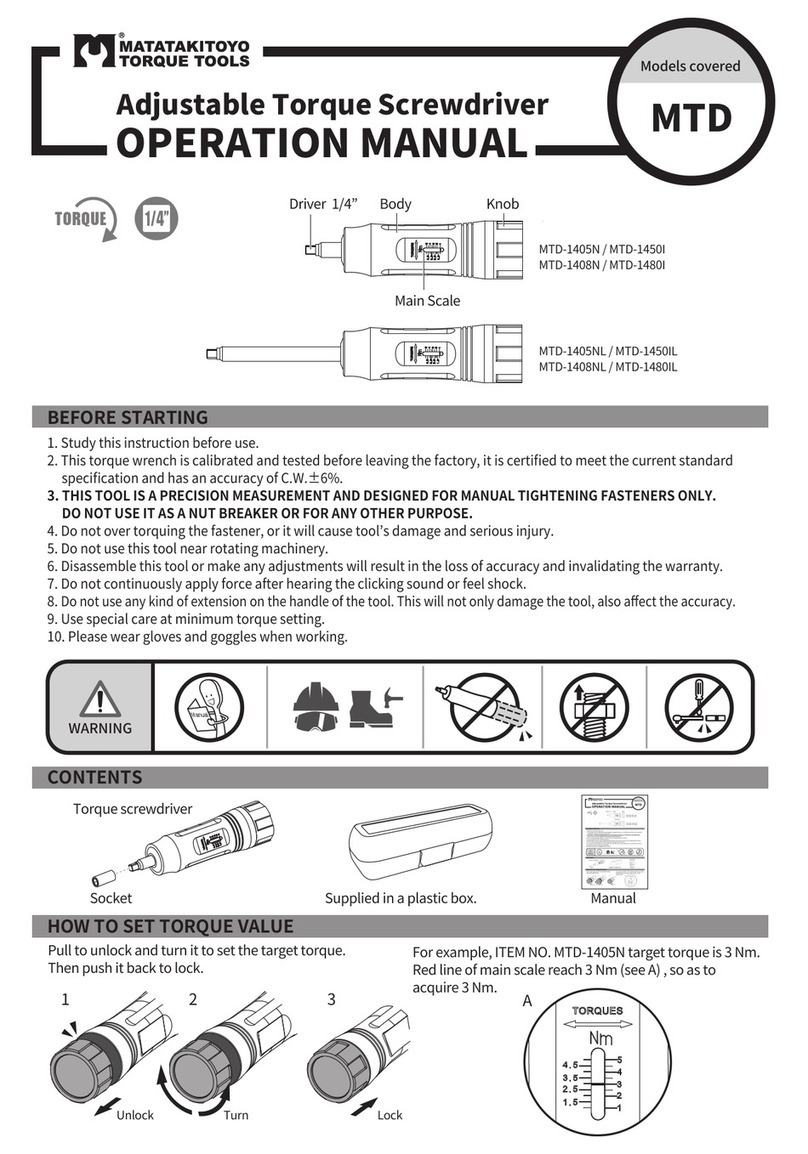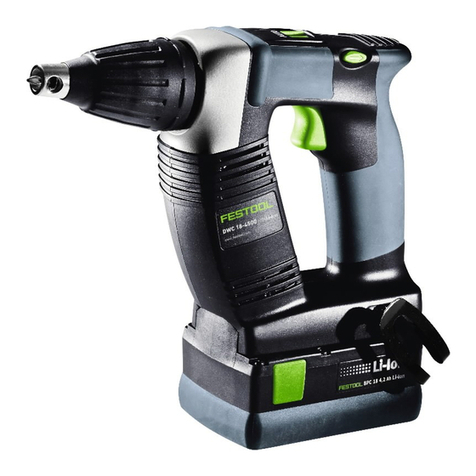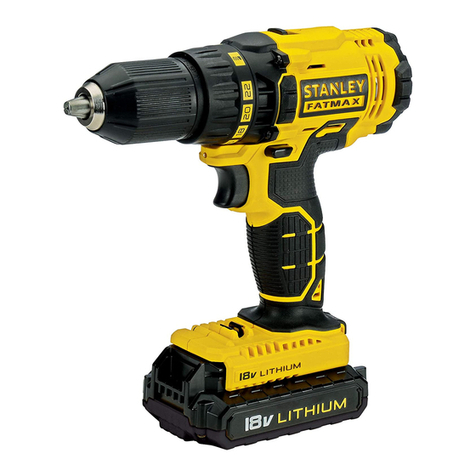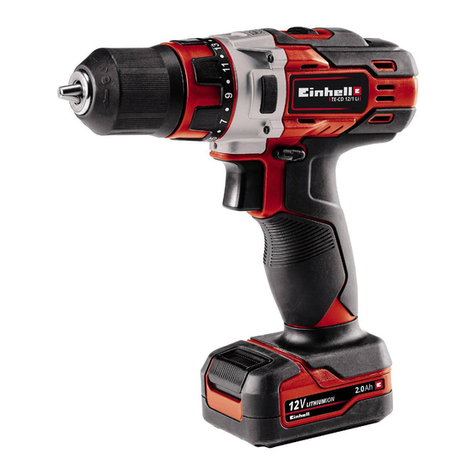
All mains electrical supply safety features must be followed as
described in 1.3 above.
Disconnect the transformer plug from the charging base and
the mains power supply when not in use.
DO NOT expose the charging base to damp or wet conditions
(for indoor use only).
DO NOT pull or carry the charging base by the transformer
power lead.
DO NOT operate the charging base if it has been dropped, or
has received a sharp knock, or is damaged. Contact an
authorised service agent.
DO NOT dismantle the charging base as this may cause
damage or personal injury and will invalidate your warranty.
DO NOT insert foreign objects or material into the hole
reserved for the battery.
DO NOT force the battery into the charging base. The battery
will only fit one way to ensure correct polarity alignment.
DO NOT immediately charge a second battery. Consecutive
charging will overheat the charging base. Allow the unit to cool
for 15 minutes before charging the next battery.
DO NOT attempt to connect two charging bases together.
Store the charging base in the same manner as battery, see
para.1.2.
2. INTRODUCTION & SPECIFICATIONS
• Electronic variable speed control, forward and reverse.
• 15 Torque settings plus ‘Drill’.
• 3-5 Hour charger with plug transformer.
• 10mm Keyless chuck.
• Integral bit holder.
• Supplied in carry-case, complete with accessories.
Variable Speeds: ................................................................... 0-600rpm
Chuck Size: ........................................................................10mm(1/2”)
Weight Inc. Battery (CP10235V): .................................................1.5kg
Weight Inc. Battery (CP10835V): .................................................1.8kg
Battery Model No (CP10235V):............................................ CB12VBP
Battery Model No (CP10835V):............................................ CB18VBP
Noise Power: ...........................................................................84.2dBA
Vibration: .................................................................................. 0.6m/s²
Accessories:
Drills................................................................... 1.5, 2.5, 3, 4, 5, 6mm
Slotted Bits .............................................................................. 5, 6mm,
Phillips Bits ............................................................................... #1, #2,
Pozi Bits .................................................................................... #1, #2
Magnetic Bit Holder
3. OPERATING INSTRUCTIONS
fig 2
Note: When new, the battery will have been shipped in a low charge
state. It will take longer to charge the battery initially (about 8
hours) and several subsequent charges may also take a little
longer than when the battery reaches its optimum performance.
3.1 CHARGING THE BATTERY PACK.
3.1.1 To remove the battery pack from the drill, depress the two side
clips on the battery. Do not touch the metal battery terminals.
3.1.2 Place drill in carrying case and remove the battery charging
base and transformer plug.
3.1.3 Connect mains transformer to the charging base (fig.1) and
place the base on a safe flat
surface. Plug the transformer into
mains socket and switch on.The
green power light will come on.
3.1.4. The battery is designed to fit into
the charging base one way only.
This is to ensure that the positive
(+) and negative (-) polarities
correspond. Align the + and -
polarity marks on the base of the
battery with the + and - marks on
the charging base, insert the battery
and press lightly to seat the battery
firmly into the charging
base, as in fig.1. WARNING! DO
NOT try to force battery into the base with crossed polarities.
3.1.5 The red charge light will come on when the battery is
inserted into the charging base, and will remain on until the
battery is removed from the base. Under normal conditions the
battery will take 3 - 5 hours to fully charge from flat.
NOTE: It will take about 8 hours for the initial charge (see Section
header note).
3.1.6 Remove the battery from the charging base and the red light
will go out. Switch off and unplug the transformer from the
mains. Push the battery into the drill base until it latches into
place. The drill is now ready for use.
3.1.7 Place the transformer plug and charging base back into the
case. Note: Attempting to recharge a battery immediately after
use may result in the red charge light not coming on. In such a
case allow the battery to cool for a time and try again.
3.2 DRILLING INSTRUCTIONS. (Ensure you have read,
understood and comply with all the safety instructions).
WARNING! Always wear approved safety glasses when drilling.
3.2.1 Preparation
1.Open the chuck by holding the rear collar and turning the
front chuck collar. See direction arrow on chuck.
2.Insert the required drill bit into the full depth of the chuck
and tighten.
3.Check the drill to ensure the direction switch is in the mid
(lock) position.
4.Insert the battery pack into the base of the drill and latch
into place.
5.The speed of the drill is controlled by the electronic
variable speed switch. After moving direction switch to
‘forward’ (or ‘reverse’) press the speed switch gently for a
slow speed and progressively increase the pressure on the
switch to produce correspondingly higher speeds (try
before starting to drill).
3.2.2 Torque Setting
Torque is the amount of turning force applied when you use
the drill. Torque setting ‘1’ is the lowest and will apply the
least effort - to the final turns of a screw, for example. The
torque becomes progressively greater with increased setting
numbers, up to a maximum of ‘6’. The combination of
variable speed and torque gives maximum drilling efficiency.
Suggested torque settings:
1 - Small screws
2 - Screws into soft material
3 - Screws into hard material
4 - Screws into hard wood
5 - Regular drilling
“Drill” symbol - Heavy drilling
There are 15 different torque settings in total, however, the
numbered notches are a rough guideline of which level of
torque should be used (see fig.2 for reference).
3.2.3 To Drill Holes
Lock a pilot drill (smaller size drill than the finished hole size)
into the chuck. Select an appropriate torque setting (para.
3.2.2.). Check to confirm the turning direction is correct.
DO NOT attempt to change direction whilst the drill is running.
Drill a pilot hole in the middle of the spot where the final hole
is to be drilled. Insert the final sized drill bit. Hold drill firmly
and place the drill bit at the entrance of the pilot hole and
press the trigger as in 3.2.1.
If the drill becomes stuck, release the switch and place the
drill in reverse by pressing the direction switch to the other
side. If this does not work, gently work the drill bit free. If the
chuck stops turning, check the torque setting.
3.2.4 As a Screw or Bolt Driver
Lock appropriate tool bit in the chuck, set appropriate torque
and proceed with the task. To remove screws, bolts, etc.,
switch the drill to reverse.
3.2.5 When you have finished working, remove the bit from the
chuck, clean drill and bit and store in the carry case.
fig 1
Original Language Version CP12035V.V2 & CP18035V.V2 Issue No.2 - 17/08/10
